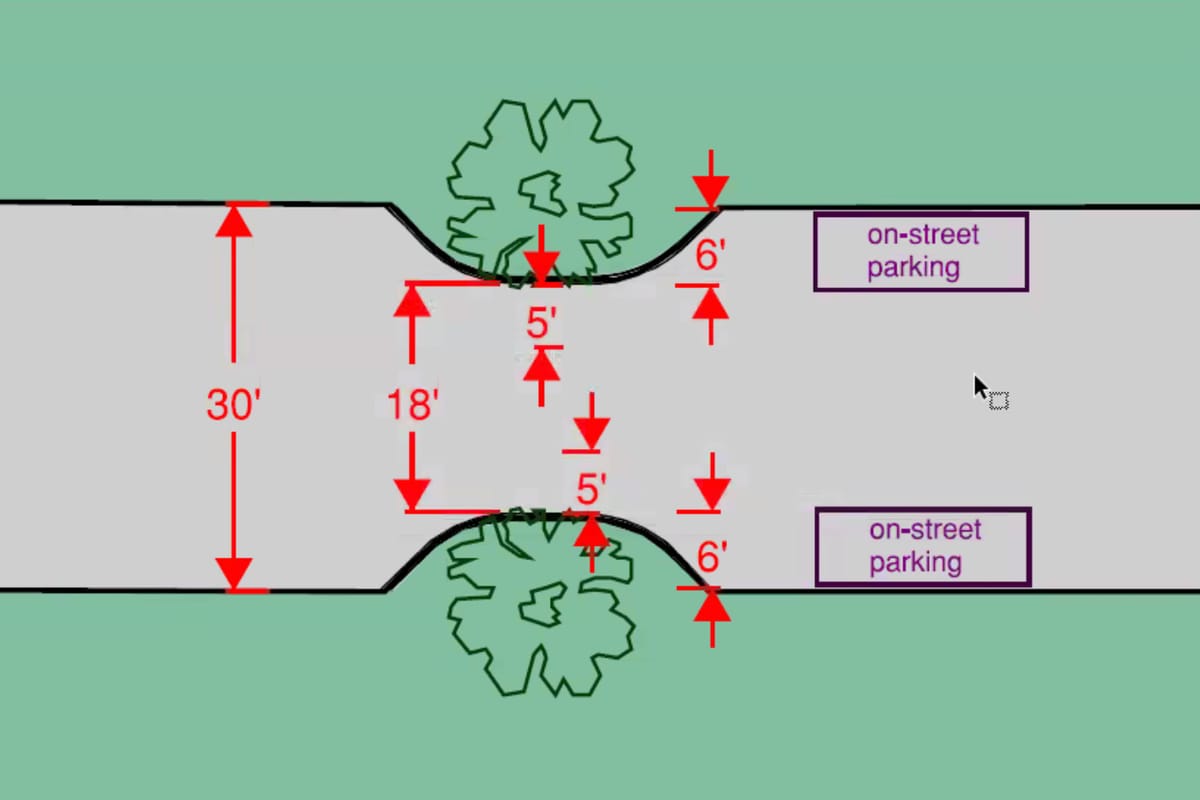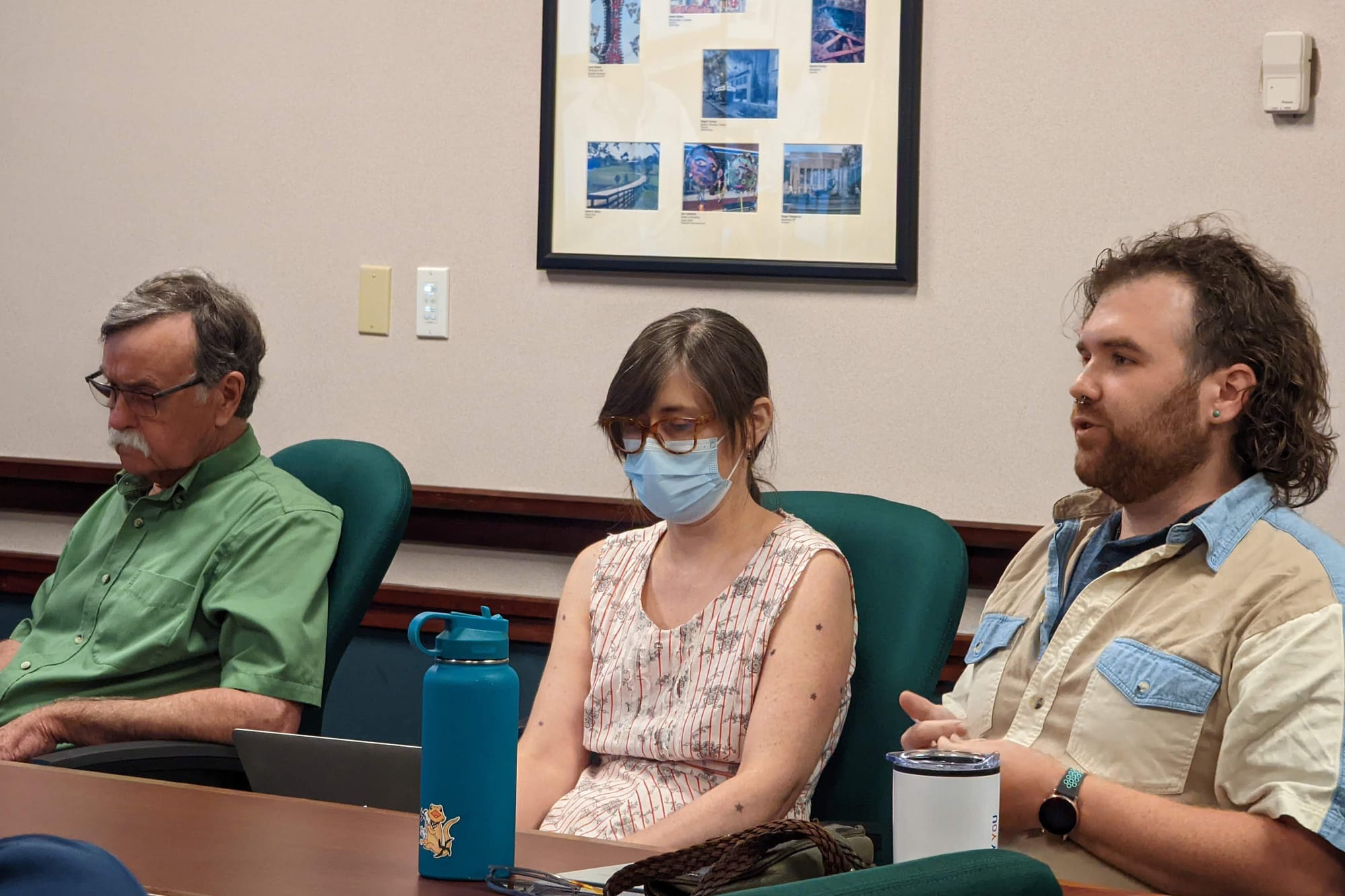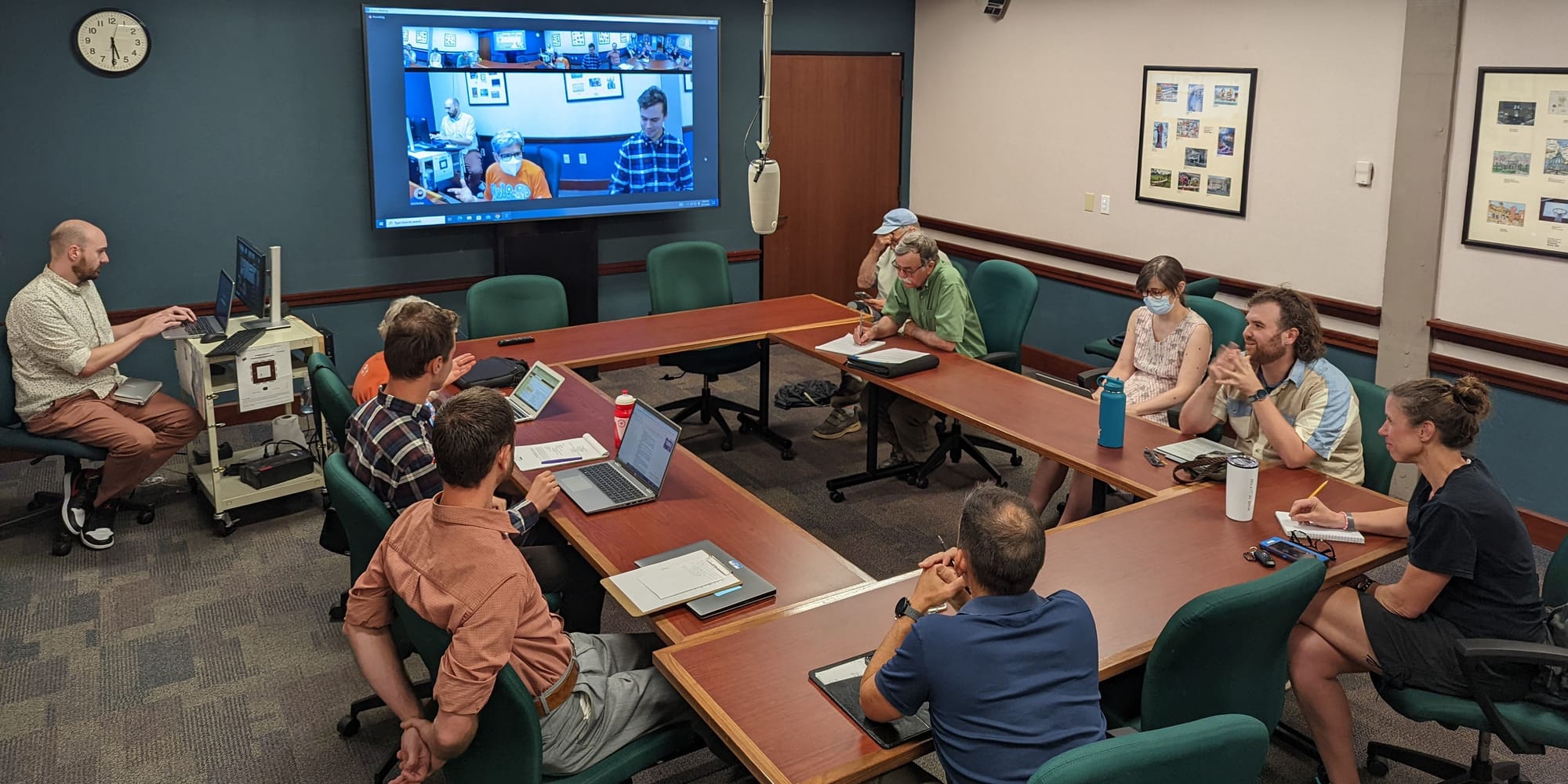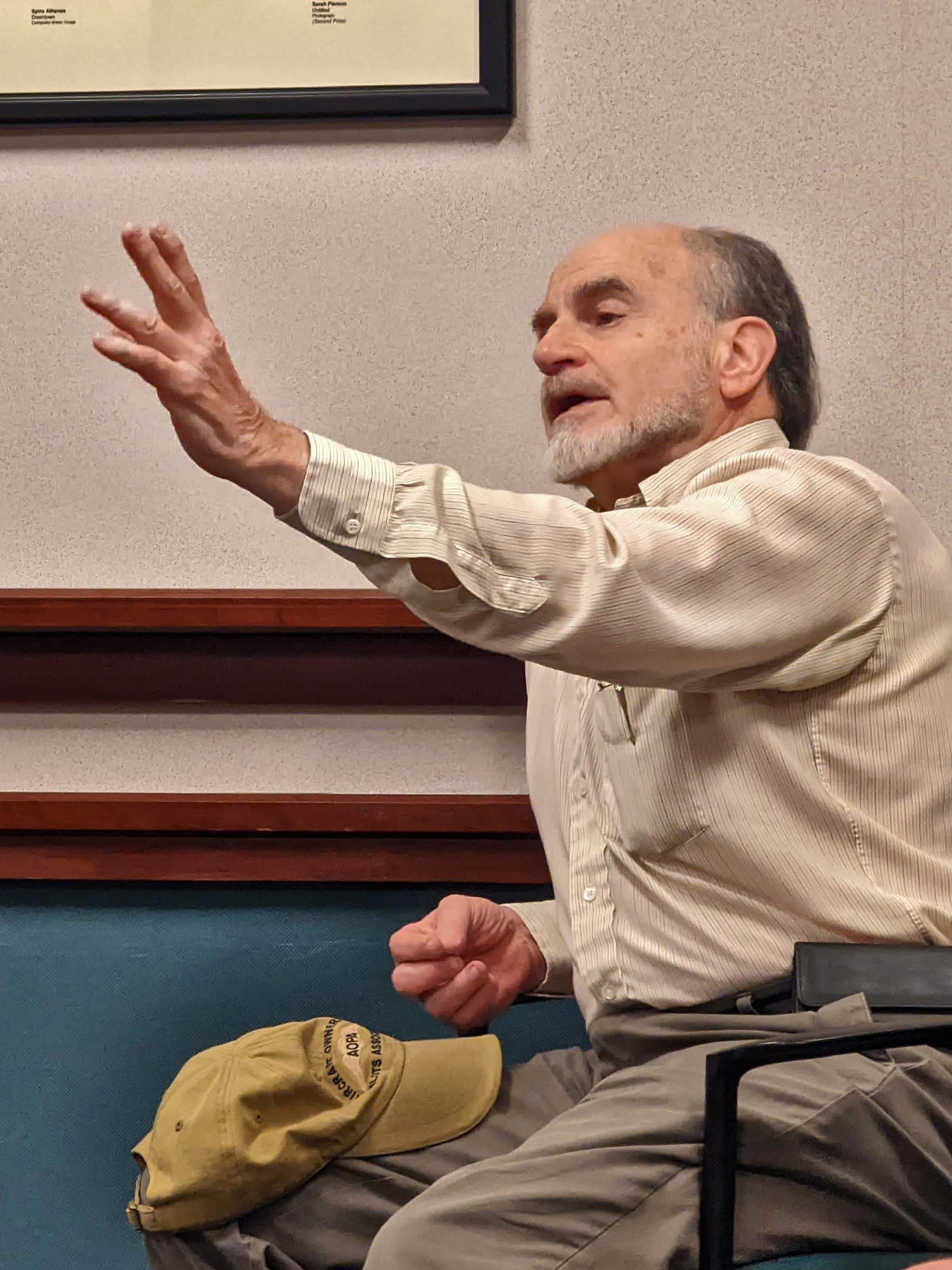Hawthorne-Weatherstone greenway gets greenlight at contentious commission meeting







On Monday night, almost a year and a half after the first public meeting on the project, Bloomington’s bicycle and pedestrian safety commission (BPSC) voted unanimously in favor of the city staff’s proposed Hawthorne-Weatherstone greenway project.
At its August meeting, the BPSC had voted to put off any decision until its meeting this month. But the BPSC voted to to allow all the public comment on the topic to finish before adjourning last month.
The lack of any public time to comment on the project at Monday’s meeting proved to be a sore point for some resident attendees. It led to some animated exchanges between them and city planning staff, as well as BPSC members.
The Hawthorne-Weatherstone greenway project will install speed humps and bump outs at locations on Weatherstone Lane heading north from Hillside. Along the stretch of Weatherstone where it bends to the east, the project will build a non-motorized path connection up to Hawthorne, where there’s no connection of any kind. From the Hawthorne dead-end up to 3rd Street, the greenway project will install additional speed humps and bump outs.
In the course of the public process, the number of locations where traffic calming measures are planned was reduced from nine to six, four of which include bumpouts, with the remaining two consisting of just speed humps.
The 7–0 vote in support of the project put the BPSC explicitly on record in support of the project, even though the commission’s actual authority when it comes to neighborhood greenway projects is more like a veto than an approval. Under the TCGP, unless the bicycle and pedestrian safety commission acts with a majority of 75-percent on the seven-member group “to send the project back to the city staff for further refinement,” then “by default” the project can proceed.
BPSC member Mitch Rice had expressed skepticism last month about the need to build a cut-through, to make the connection from Weatherstone to Hawthorne. As the roll call was being taken, a nearby neighbor of the project, Justin Foster, spoke up: “Shame on you all!” Rice responded by telling Foster, “I was gonna vote no, but you just turned me!”
Foster had spoken up a few minutes earlier about the lack of available public comment about the Hawthorne-Weatherstone project during Monday’s meeting. The issue surfaced when nearby neighbor Stephanie Hatton tried to respond to senior project engineer Neil Kopper’s description of some speed humps to be installed as part of the project.
Kopper described how there were three speed humps arranged across the road with space between each of them, which meant four gaps that cyclists could ride through, without going over the speed humps. Hatton wanted to clarify that not all the speed hump locations included three humps.
Planning services manager Ryan Robling told Hatton that public commentary was closed. Here’s how that exchange unfolded:
Hatton: I’m really sorry…
Robling: … no, please, sorry, public comment is …
Hatton: …I don’t have a comment, I have a question—about the presentation…
Robling: …they’re both closed. I’m so sorry.
Hatton: You know, what you said was incorrect about the three. There are…
Robling: … I am so sorry! So sorry! The public comment is closed. There’s no question and answer…
Hatton: …I would like to…
Robling: …No! …
Hatton: … clarify information…
Robling: …No! I’m so sorry. It’s closed.
Foster took up the issue of the lack of any available public comment and got clarification from Robling that public comment had been entertained at the August meeting about Hawthorne-Weatherstone, but none would be allowed that night.
There were a dozen and a half residents in the meeting room at city hall. “So why are we all here?” asked Foster. “I don’t know,” Robling replied.
Foster then called for some member of the BPSC to make a motion to allow public comment and to vote on that motion: “Would you make a motion and allow public comment on this city-changing ridiculous escapade that’s going on here?”
BPSC president Ann Edmonds said, “I don’t think we even have the authority to do that.” Foster told Edmonds, “Well, why don’t you try and see what happens—if any parliamentarian stops you.”
BPSC member Rob Danzman weighed in for sticking to the process that has been used for “quite a long time that predates me and a lot of other people here.” He added, “ I think we need to keep moving through our agenda, because we’re not going to get to everything.”
As Foster continued to push for a vote on allowing public comment, BPSC member Pauly Tarricone turned towards Foster and said, “Can you stop disrupting the meeting?”
BPSC member Paul Ash said, “We’ve heard you all. Last meeting. Again. And again. And again.”
What appeared to be a source of irritation for some of the public who attended was the chance given to Kopper, the engineer, and Hank Duncan, the city’s bicycle and pedestrian coordinator, to give remarks in support of the project at the start of Monday’s meeting—with no chance for rebuttal.
Even though opposition to the Hawthorne-Weatherstone greenway project has been strong among those who live along the corridor, at last month’s meeting, there were some voices of support.
That’s something that Duncan drew on in his remarks to lead off Monday’s meeting. He talked about “public engagement fatigue.” He elaborated: “When you want to speak out on a project, whether it’s positive or negative, and you do that for a certain meeting. But when it comes to a second or third or fourth meeting on that same project, there’s a fatigue there, where you already spent your time, you spent your energy.”
Duncan continued, saying, “Even if certain meetings were very positive, some meetings were very negative on any project, we have to take the whole picture and put it into one basket, and especially take into account those who weren’t able to attend in the first place.”
Other topics that Duncan touched on in his remarks included the idea that traffic calming infrastructure does, in fact, reduce the speed of automobile traffic, which improves safety.
Duncan also pointed to a north-south bicycle connection that is called for in the city’s transportation plan, of which the Hawthorne-Weatherstone greenway is a part. The Hawthorne-Weatherstone project is just one segment of that connection that will eventually stretch from the southernmost reaches of the city to the northern edge, Dunan said. “It’s very easy to lose sight of this big picture, because these projects happen separately,” Duncan said
The long timeline for the project stems from an effort by city councilmember Dave Rollo, to put the question of the Hawthorne-Weatherstone greenway, and other similar projects, in front of the city council for an ultimate decision.
The first public meeting for the Hawthorne-Weatherstone greenway project was held in March of 2022. It was headed towards consideration by the BPSC, when on Nov. 16, 2022 Rollo introduced Ord 22-35. That ordinance would have amended the city’s Traffic Calming and Greenways Program, to include a city council vote on all neighborhood greenway projects.
But at the council’s Dec. 7, 2022 meeting, the council amended the meeting agenda to remove Ord 22-35, which would have been up for a final vote that night. On that occasion, the council essentially gave a higher priority to a different agenda item—one involving the issuance of bonds to finance the Showers West project.
Earlier this year, on April 19, Rollo brought back a similar proposal, in the form of Ord 23-08. But Ord 23-08 failed on a 4–5 vote, which was taken on May 10 of this year.
That left the Traffic Calming and Greenways Program (TCGP) intact, which gives the BPSC the ultimate decision on neighborhood greenways.
Rollo attended Monday’s BPSC meeting, as did Andy Ruff, who will almost certainly be returning to the council in 2024. Ruff is part of a three-person Democratic Party slate of at-large city council nominees that is unopposed on the Nov. 7 ballot. Neither Rollo nor Ruff spoke during Monday’s meeting.




Comments ()